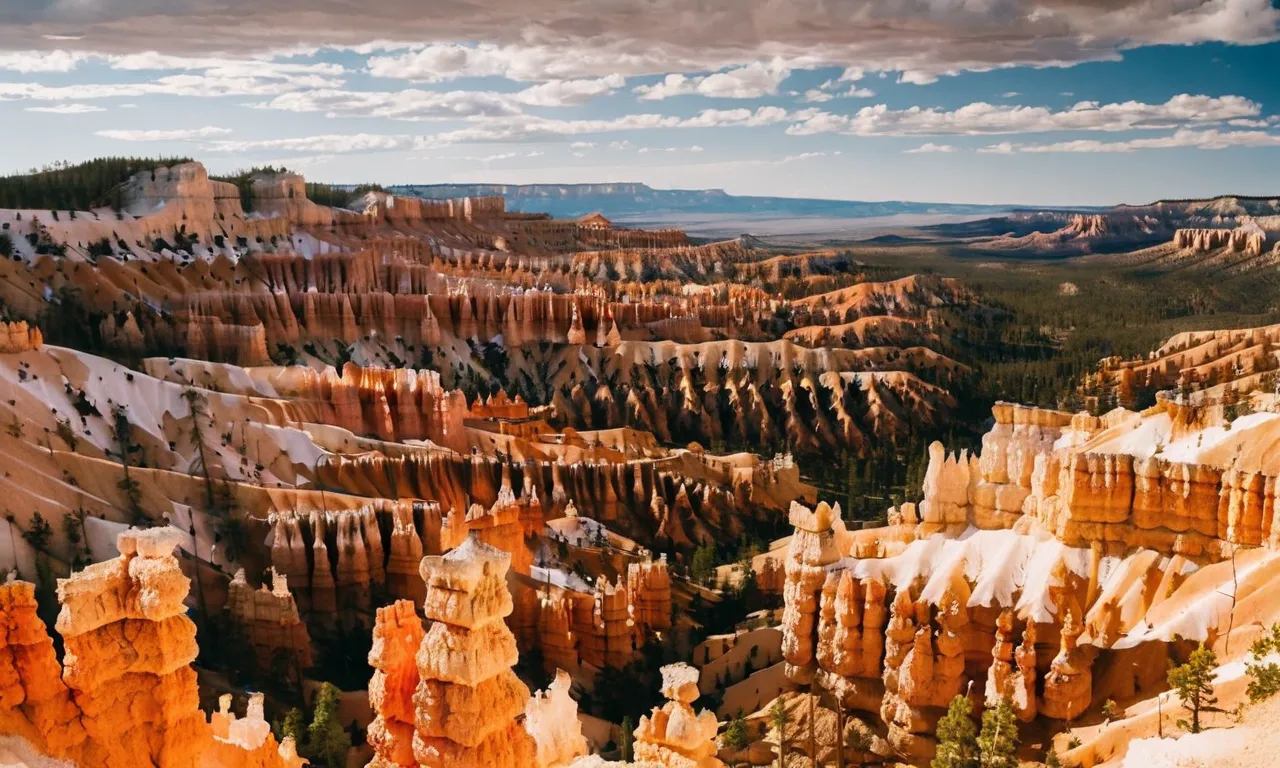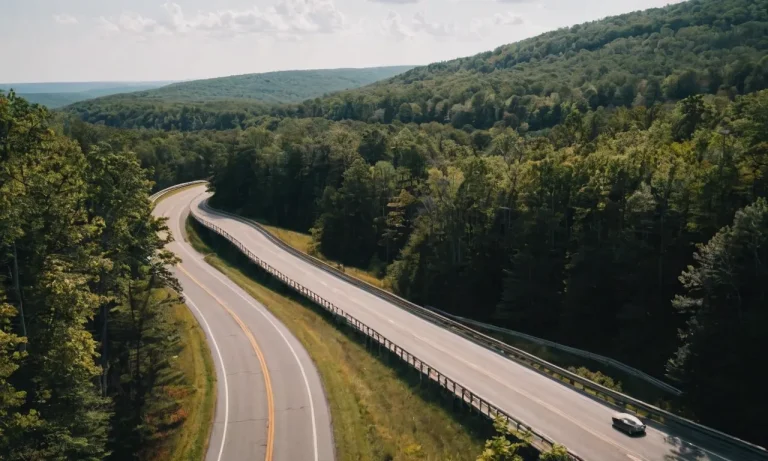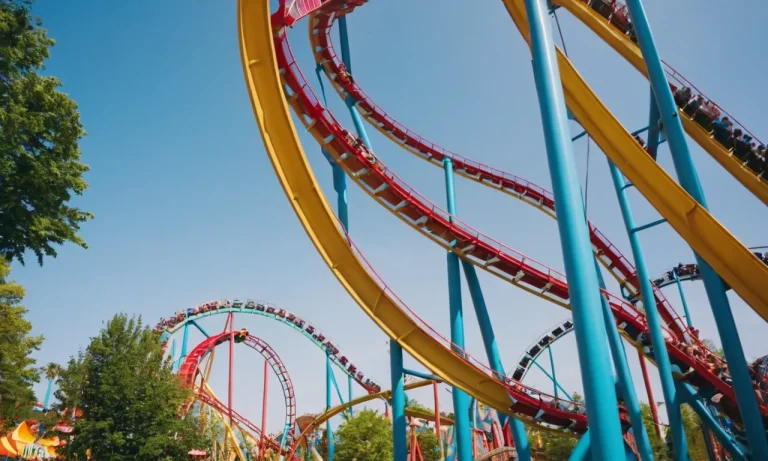Are There Bears In Bryce Canyon?
Bryce Canyon National Park in southern Utah is known for its unique and colorful rock formations, carved over time by wind and water erosion. With majestic hoodoos, natural amphitheaters, and awe-inspiring views, Bryce attracts over 2 million visitors per year.
If you’re short on time, here’s a quick answer: There are no bear species that reside permanently in Bryce Canyon, but black bears occasionally wander into the park.
An Overview of Bryce Canyon
Bryce Canyon is a breathtaking national park located in southern Utah, United States. It is known for its unique geological formations known as hoodoos, which are tall, thin spires of rock that have been eroded by wind and water over millions of years.
The park covers an area of over 35,000 acres and attracts millions of visitors each year.
Geographic Location and Terrain
Bryce Canyon is situated in the Colorado Plateau region and is part of the Grand Staircase-Escalante National Monument. It is located at an elevation of approximately 8,000 to 9,000 feet above sea level, making it one of the highest national parks in the United States.
The park is characterized by its steep cliffs, deep canyons, and a series of natural amphitheaters.
The main feature of Bryce Canyon is the Bryce Amphitheater, which is a collection of horseshoe-shaped amphitheaters carved into the eastern side of the Paunsaugunt Plateau. The amphitheater is home to the largest concentration of hoodoos in the park and offers stunning views of the surrounding area.
Climate and Vegetation
Bryce Canyon experiences a high desert climate, with hot summers and cold winters. Average temperatures in the summer range from 70 to 80 degrees Fahrenheit, while winter temperatures can drop below freezing.
The park receives an average of 15 inches of precipitation per year, with most of it falling as snow during the winter months.
The vegetation in Bryce Canyon is diverse and unique. The park is home to a variety of plant species, including ponderosa pine, Douglas fir, aspen, and juniper trees. The higher elevations are covered in alpine meadows, which are adorned with colorful wildflowers during the summer months.
Wildlife
Bryce Canyon is teeming with wildlife, providing visitors with numerous opportunities for wildlife viewing and photography. Some of the most common animals found in the park include mule deer, elk, foxes, and coyotes.
Birdwatchers will be delighted to spot a variety of bird species, including golden eagles, peregrine falcons, and Steller’s jays.
It is important to note that while Bryce Canyon is a wildlife haven, it is not home to bears. The park does not have a significant bear population, and encounters with bears are extremely rare. Visitors should still exercise caution and follow proper wildlife safety protocols to ensure their own safety and the well-being of the park’s inhabitants.
If you want to learn more about Bryce Canyon and its unique features, you can visit the official website of the National Park Service at https://www.nps.gov/brca/index.htm.
Bear Species in Utah
Utah is home to two species of bears: black bears and grizzly bears. While these majestic creatures can be found in various parts of the state, including national parks and forests, it’s important to note that they are not commonly seen in Bryce Canyon.
Black Bears
Black bears are the most common bear species in Utah. They can be found in many regions of the state, including the Uinta Mountains, Wasatch Mountains, and the Manti-La Sal National Forest. Black bears are known for their black fur, although some individuals may have brown or cinnamon-colored fur.
They are generally smaller than grizzly bears, with males weighing between 200-600 pounds and females weighing between 100-400 pounds.
Black bears are omnivores, meaning they eat both plants and animals. Their diet consists of berries, nuts, grasses, insects, and occasionally small mammals. While they are generally shy and avoid human contact, it’s important to take precautions if you encounter a black bear in the wild.
Make loud noises, wave your arms, and slowly back away to give the bear a chance to retreat.
If you want to learn more about black bears in Utah, you can visit the Utah Division of Wildlife Resources website.
Grizzly Bears
Grizzly bears, also known as brown bears, were historically found in Utah but are now considered extinct in the state. The last confirmed sighting of a grizzly bear in Utah was in the 1920s. However, there have been occasional reports of grizzly bear sightings in neighboring states like Wyoming and Montana.
Grizzly bears are much larger than black bears, with males weighing between 500-1,500 pounds and females weighing between 300-800 pounds. They are known for their distinctive hump on their shoulders and the silver-tipped fur on their backs.
Grizzly bears are also omnivores and have a similar diet to black bears.
If you want to learn more about grizzly bears and their conservation efforts, you can visit the U.S. Fish and Wildlife Service website.
Bear Sightings in Bryce Canyon
Bryce Canyon National Park is a stunning destination known for its unique geological formations and breathtaking views. But amidst the beauty, visitors often wonder if there are bears in the park. While bears are not commonly seen in Bryce Canyon, there have been occasional sightings over the years.
Occasional Bear Sightings
Bryce Canyon National Park is located in southwestern Utah, which is not typically known as bear country. However, bears do occasionally wander into the park from surrounding areas. These sightings are infrequent and visitors should not be overly concerned about encountering a bear during their visit.
It’s important to note that bear sightings in Bryce Canyon are rare and usually occur near the park’s boundaries. Bears are more commonly found in nearby national parks such as Zion National Park and the Grand Canyon.
Precautions for Visitors
While the chances of encountering a bear in Bryce Canyon are slim, it’s always a good idea to take precautions when visiting any wilderness area. Visitors should be aware of their surroundings and follow these guidelines:
- Store food properly: Bears are attracted to the smell of food, so it’s essential to store food in bear-resistant containers or hang it from a tree away from your campsite.
- Make noise: Bears are more likely to avoid humans if they are aware of their presence. Be sure to make noise while hiking or exploring to alert any nearby wildlife.
- Keep a safe distance: If you do happen to encounter a bear, it’s important to keep a safe distance. Do not approach or attempt to feed the bear.
- Report sightings: If you do spot a bear in Bryce Canyon, report the sighting to park rangers. This information helps them monitor the bear’s behavior and take necessary precautions to ensure visitor safety.
Remember, the chances of encountering a bear in Bryce Canyon are extremely low. Enjoy the park’s stunning scenery and unique geological features while following the necessary precautions to ensure a safe and enjoyable visit.
Staying Safe in Bear Country
Exploring the beautiful wilderness of Bryce Canyon National Park can be an incredible experience, but it’s important to be aware of the potential presence of bears in the area. While encounters with bears are rare, it’s always better to be prepared and know how to stay safe.
Here are some precautions to take and what to do if you encounter a bear:
Precautions to Take
When venturing into bear country, it’s essential to take certain precautions to minimize the risk of a bear encounter. Firstly, make sure to store all your food, trash, and scented items in bear-resistant containers. This helps prevent attracting bears to your campsite or hiking trails.
Additionally, keep a clean campsite by properly disposing of any food scraps or waste. Bears have a very keen sense of smell, so it’s crucial to eliminate any potential attractants.
Another important precaution is to make noise while hiking. Bears are generally shy and will avoid human encounters if they are aware of your presence. Talk, sing, or clap your hands to alert bears of your presence and give them an opportunity to move away.
It’s also recommended to hike in groups rather than alone, as bears are less likely to approach a larger group of people.
It’s worth noting that bears are more active during certain times of the year, such as early morning and late afternoon. Be mindful of their habits and plan your activities accordingly. Finally, it’s always a good idea to familiarize yourself with bear safety guidelines provided by the park authorities or local wildlife organizations.
What to Do If You Encounter a Bear
Despite taking all the necessary precautions, there is still a slight chance of encountering a bear while exploring Bryce Canyon. If you do come across a bear, it’s important to remain calm and avoid any sudden movements. Back away slowly while facing the bear and try to maintain eye contact.
Do not run or turn your back on the bear, as this may trigger its predatory instincts.
If the bear approaches you or acts aggressively, it’s important to stand your ground. Use a firm, authoritative voice to speak to the bear and make yourself appear larger by raising your arms or holding an object above your head. If you have bear spray, prepare to use it as a last resort.
Remember, bear spray is highly effective in deterring bear attacks.
Once the bear has moved away, slowly and cautiously leave the area. Report the encounter to the park authorities or rangers, as they need to be aware of any bear activity in the park. Sharing your experience can help them take necessary measures and ensure the safety of other visitors.
Remember, encountering a bear can be an awe-inspiring experience, but it’s crucial to prioritize safety. By taking precautions and knowing how to react, you can enjoy the beauty of Bryce Canyon while minimizing the risk of bear encounters.
Conclusion
In summary, while black bears occasionally wander into Bryce Canyon and surrounding areas, there are no bear species that permanently reside in the park. By being aware and taking proper precautions, visitors can safely enjoy everything Bryce Canyon has to offer.








